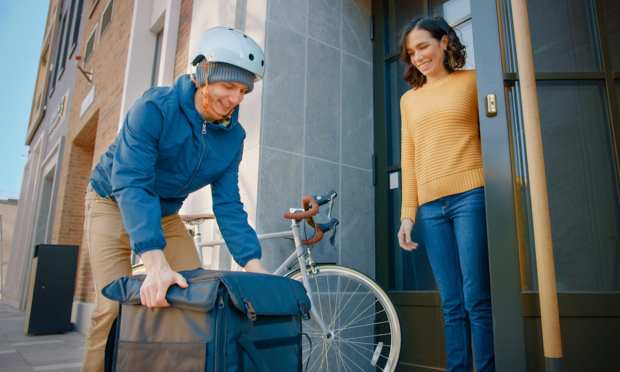Grocers Aim To Shift Home Delivery To Offices As Consumer Return To Work

Online grocery delivery ordering has surged since the start of the pandemic, as a behavior that may have initially started as a safety measure has since become a habit. However, as much as consumers have grown used to the ease of deliveries right at their doorstep, the question remains: Will eGrocery retain its customers as workers return to the office? Grocery pickup solutions provider Bell and Howell and North Carolina-based supermarket chain Lowes Foods aim to see that it does. The two companies announced a partnership on Wednesday (June 9) that will allow them to bring grocery deliveries to shoppers’ places of work.
“In today’s contactless delivery world of ease and convenience, this partnership provides consumers with more pickup and delivery options for their grocery shopping experience,” Joe Zuech, vice president of grocery pickup for QuickCollect Solutions, said in a statement.
The partnership enables the supermarket chain to offer Bell and Howell’s QuickCollect Solutions, through which items are delivered to smart lockers and kiosks for self-service pickup. The temperature-controlled grocery lockers will be installed in offices and corporate campuses, enabling customers to pick up their orders without leaving the workplace. These grocery lockers have also been utilized by other grocers, food banks, and farmers markets.
In this partnership, orders will be assembled in stores by Lowes Foods pickers. The service supplements the existing Lowe’s Foods To Go delivery and curbside pickup eCommerce business.
“We’re excited to take the foundation we’ve built in grocery delivery and layer in a completely new level of convenience,” said Chad Petersen, vice president of eCommerce at Lowes Foods. “We are striving to provide as much ease and convenience as we can to ease the stress of our very busy guests.”
With the industry-wide rollout of increasingly convenient and fast grocery delivery, grocers may be making a play for a larger share of consumers’ food spending. Where previously quick-service restaurants (QSRs) were the clear choice when it came to meeting food needs quickly and affordably, shopping for groceries is becoming comparably convenient.
“When you combine restaurants and grocery as a $1.6 trillion eats industry, it’s huge,” ordering platform Olo’s founder and CEO Noah Glass told PYMNTS in an interview in May. “And there’s so much opportunity … to go and do interesting things that add value to merchants and to consumers.”
In today’s connected economy, businesses have the opportunity to offer consumers access to digital-first ecosystems of integrated experiences. Rather than having to drop everything to go to the grocery store, consumers can leverage these sorts of online tools to join their grocery routine to their work routine or their home routine.
As Karen Webster pointed out in a recent story on eGrocery in the connected economy, “There are roughly 45 million consumers — we call then them digital shifters — at the tip of the connected ‘Eat’ ecosystem spear. And this Eat ecosystem — how consumers buy and pay for their food and where they eat it — is quickly becoming one of the most fascinating case studies for how connected economies develop, compete and scale.”
As grocery becomes an increasingly seamless experience, major QSRs may need to work harder to earn their share of consumers’ Eat budgets.
